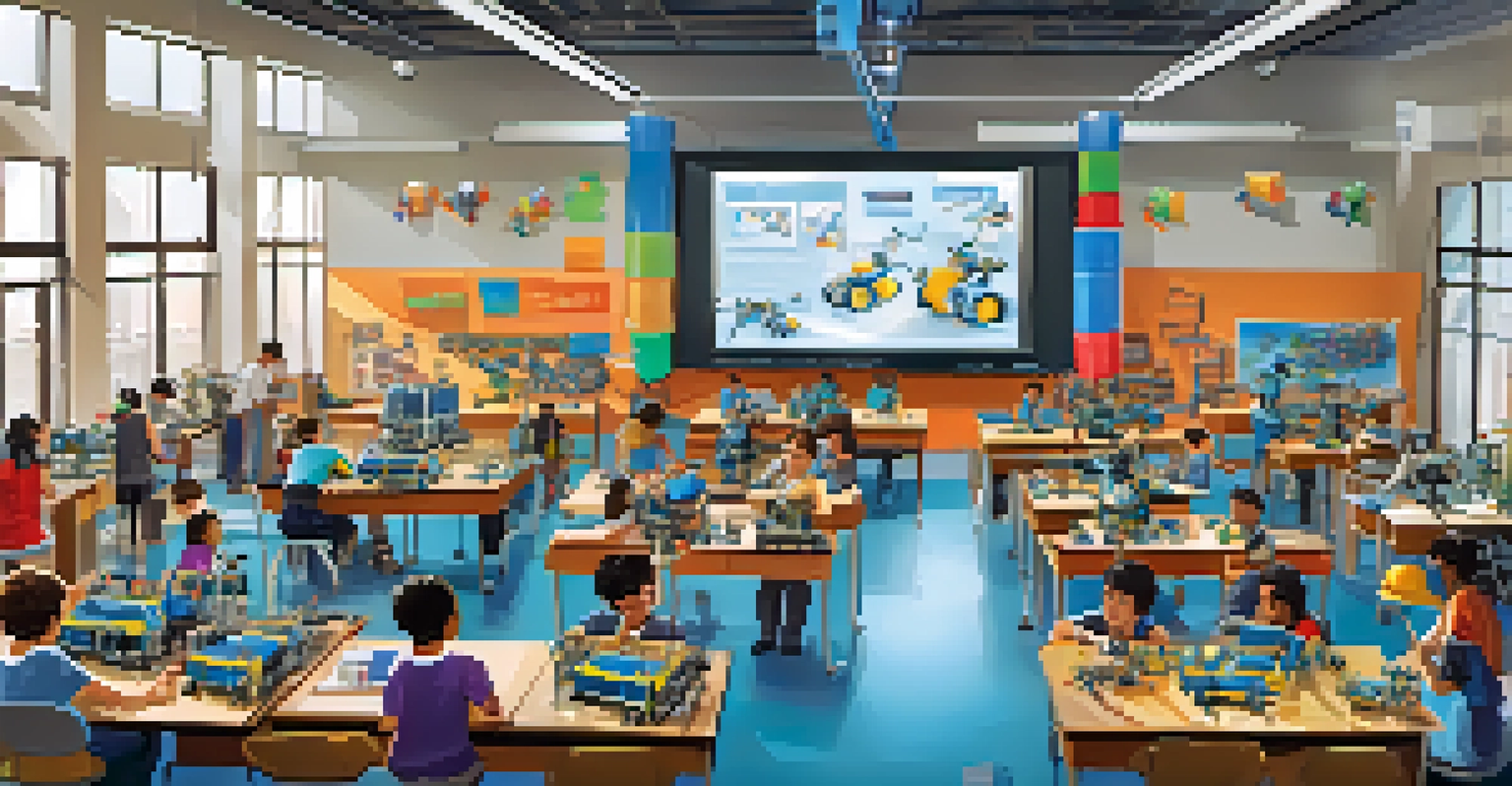The Future of Education in Utah: Trends and Innovations

Embracing Technology: The Digital Classroom Revolution
In recent years, technology has transformed education, and Utah is no exception. Schools are increasingly adopting digital tools like tablets and interactive whiteboards, making learning more engaging for students. This digital classroom revolution not only enhances the learning experience but also prepares students for a tech-driven world.
Education is the most powerful weapon which you can use to change the world.
Moreover, online learning platforms are gaining traction, especially in remote areas where access to traditional education might be limited. These platforms offer flexibility, allowing students to learn at their own pace and on their own schedules. For instance, Utah's online charter schools are expanding, providing quality education to a diverse student body.
As we look to the future, the integration of virtual reality and augmented reality in classrooms could further revolutionize learning. Imagine students exploring ancient civilizations through VR or conducting science experiments in a simulated lab. Such innovations promise to make education more immersive and interactive.
Personalized Learning: Tailoring Education to Individual Needs
Personalized learning is quickly becoming a cornerstone of modern education in Utah. Rather than a one-size-fits-all approach, educators are focusing on the unique strengths and interests of each student. This method enhances engagement and improves learning outcomes, making education more relevant.

For example, schools are using data analytics to track student performance and tailor lesson plans accordingly. Teachers can identify areas where a student excels or struggles, allowing for targeted support that meets individual needs. This approach not only boosts academic achievement but also fosters a love for learning.
Tech Transforms Utah Education
The integration of digital tools and online learning platforms is reshaping the educational landscape in Utah, making learning more engaging and accessible.
Looking ahead, the rise of adaptive learning technologies will further enhance personalized education. These tools can adjust content in real-time based on a student’s progress, ensuring that each learner remains challenged yet supported. This shift promises to create an educational landscape where every student can thrive.
Project-Based Learning: Building Skills Through Real-World Challenges
Project-based learning (PBL) is gaining momentum in Utah's educational institutions. This approach encourages students to engage in hands-on projects that address real-world issues, fostering critical thinking and problem-solving skills. For instance, students might work on a community garden project, learning about biology, teamwork, and sustainability simultaneously.
The art of teaching is the art of assisting discovery.
PBL not only enhances academic knowledge but also equips students with practical skills they can use in the workforce. Collaboration, communication, and creativity are all essential components of successful projects, and these are precisely the skills employers seek in today’s job market.
As we envision the future, more schools are likely to adopt PBL as a core teaching strategy. By bridging the gap between theory and practice, educators can better prepare students for the complexities of the modern world, ensuring they are ready to tackle the challenges ahead.
The Rise of STEM Education: Preparing for Tomorrow's Careers
STEM education—focusing on Science, Technology, Engineering, and Mathematics—is becoming increasingly vital in Utah. With the growing demand for skilled professionals in these fields, schools are prioritizing STEM curricula to prepare students for future careers. This shift ensures that students are equipped with the knowledge and skills needed in our rapidly evolving job landscape.
Educational initiatives, such as coding camps and robotics competitions, are also gaining popularity. These programs not only introduce students to STEM concepts but also spark their interest in pursuing careers in these areas. For example, Utah’s FIRST Robotics teams encourage teamwork and innovation, fostering a passion for engineering among young learners.
Personalized Learning Gains Ground
Educators in Utah are increasingly adopting personalized learning approaches that cater to the unique strengths and interests of each student.
Looking forward, partnerships between schools and local businesses can further enhance STEM education. By providing mentorships and internships, they can offer students real-world experience, bridging the gap between education and employment. Such collaborations promise to cultivate a generation of innovators ready to drive technological advancements.
Social and Emotional Learning: A Holistic Approach to Education
Social and emotional learning (SEL) is becoming a crucial aspect of education in Utah. Recognizing that academic success is linked to emotional well-being, schools are integrating SEL into their curricula. This focus helps students develop essential skills such as self-awareness, empathy, and resilience, which are vital for personal and academic success.
Programs that promote SEL often include activities that encourage collaboration and communication among students. For example, schools might implement peer mediation programs, allowing students to resolve conflicts peacefully while building their social skills. Such initiatives create a supportive school environment where students feel safe and valued.
As we look to the future, the emphasis on SEL is expected to grow, with more schools adopting comprehensive programs. By prioritizing emotional intelligence alongside academic achievement, Utah's education system can produce well-rounded individuals capable of navigating life’s challenges.
Inclusive Education: Meeting Diverse Learning Needs
Inclusive education is gaining traction in Utah, ensuring that all students, regardless of their backgrounds or abilities, receive a quality education. This approach recognizes that diversity enriches the classroom and that every student should have equal opportunities to learn. Schools are increasingly implementing strategies to support students with special needs, language barriers, or different learning styles.
For instance, co-teaching models are becoming more common, where general education and special education teachers collaborate to meet the needs of all students. This teamwork allows for differentiated instruction, ensuring that every learner receives the support they need to thrive. Such inclusive practices not only benefit students with special needs but also enhance the learning experience for everyone.
Community Ties Enhance Learning
Stronger partnerships between schools and local communities are enriching educational experiences and fostering student engagement in real-world contexts.
In the future, we can expect to see continued efforts toward inclusivity in Utah’s education system. Training educators in culturally responsive teaching and providing resources for diverse learners will be essential steps in creating a more equitable educational landscape.
Community Engagement: Strengthening School-Community Ties
Community engagement is becoming an essential part of the educational landscape in Utah. Schools are recognizing the importance of strong ties with local communities, fostering partnerships that enhance the learning experience. When parents, businesses, and organizations collaborate with schools, students benefit from a wealth of resources and support.
For example, community service projects allow students to apply their learning in real-world contexts while giving back to their neighborhoods. Such initiatives not only enrich students' education but also instill a sense of responsibility and civic engagement. This connection helps students understand the impact of their actions and the importance of contributing to society.

As we move forward, the emphasis on community engagement is expected to grow. Schools will likely continue to seek partnerships that provide students with valuable experiences and opportunities, ultimately creating a more supportive and vibrant educational environment.